
Our glacier training at HMI Base Camp was about to start and we were all set to learn all the techniques and perform all the activities that were scheduled.
In case you haven’t checked the previous blogs then scroll down and find all the blog links.
Glacier Training at HMI Base Camp
So now it was the time to get excelled in the Ice Craft and Snow Craft training so that we could become a complete mountaineer. Our training was scheduled to start from the next day after we reached the base camp. On the first day, we just trekked up to the midway to have a glimpse of the Rathong Glacier and surrounding peaks. We had a lecture on the surroundings in which our instructor told us about the mountain peaks and their history which were situated around the Rathong Valley. In the evening, we were given crampons and were taught how to fix it on snow boots and walk with it.
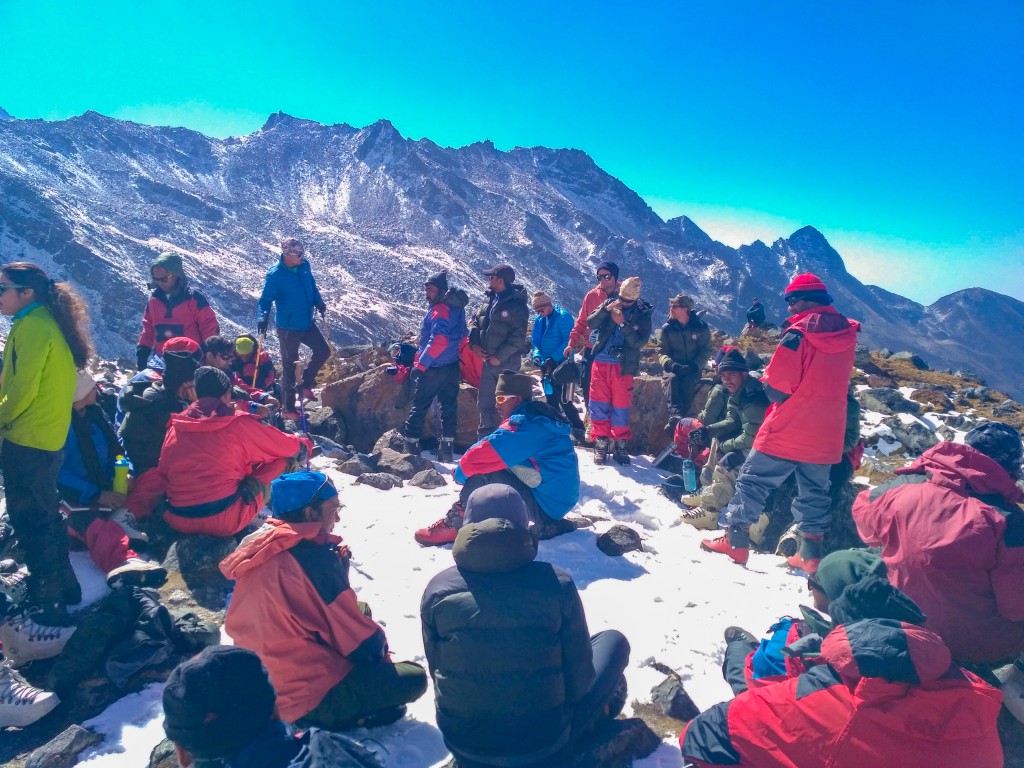

The next day was the very first day of our glacier training. Everyone was excited including me as it was the first time I was going on a glacier. Our training schedule included 4 days of glacier training in which we had to do so many activities.
The training area was Rathong Glacier, the source of the Rathong River. To reach the glacier, we used to do a trek of 3 hours. The trek to the glacier from the base camp was moderate but after wearing snow boots, it used to become difficult. We had to negotiate our way through the big boulders, frozen river, scree, moraine, and almost every kind of terrain. The most unique experience was when we used to cross the frozen river. Sometimes during the sunny day, the uppermost layer of ice of the frozen river used to get melted and it seemed us as we are walking on a soft ice mattress. During that time, our instructor advised us to walk slowly and 3-4 persons at a time on that frozen river. It was a bit scary but a thrilling experience.
It usually took us around 2.5 to 3 hours to reach the glacier from the base camp. After reaching the glacier, we were asked to put on the harness seat and crampons without any rest and then we used to start with the training.
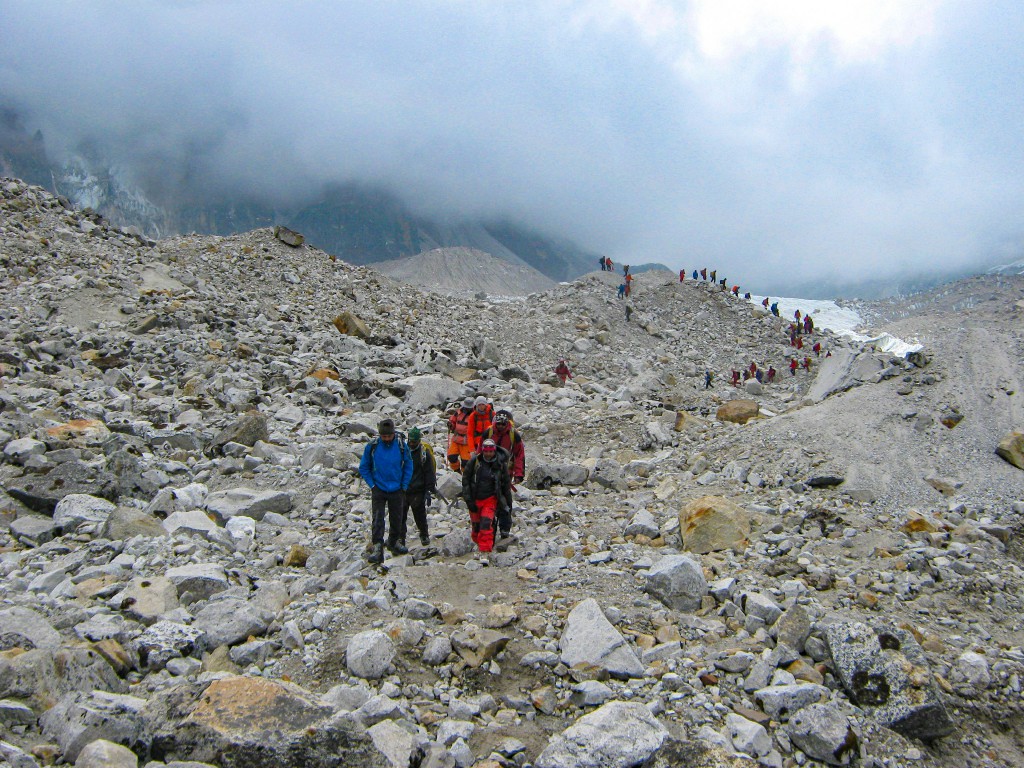
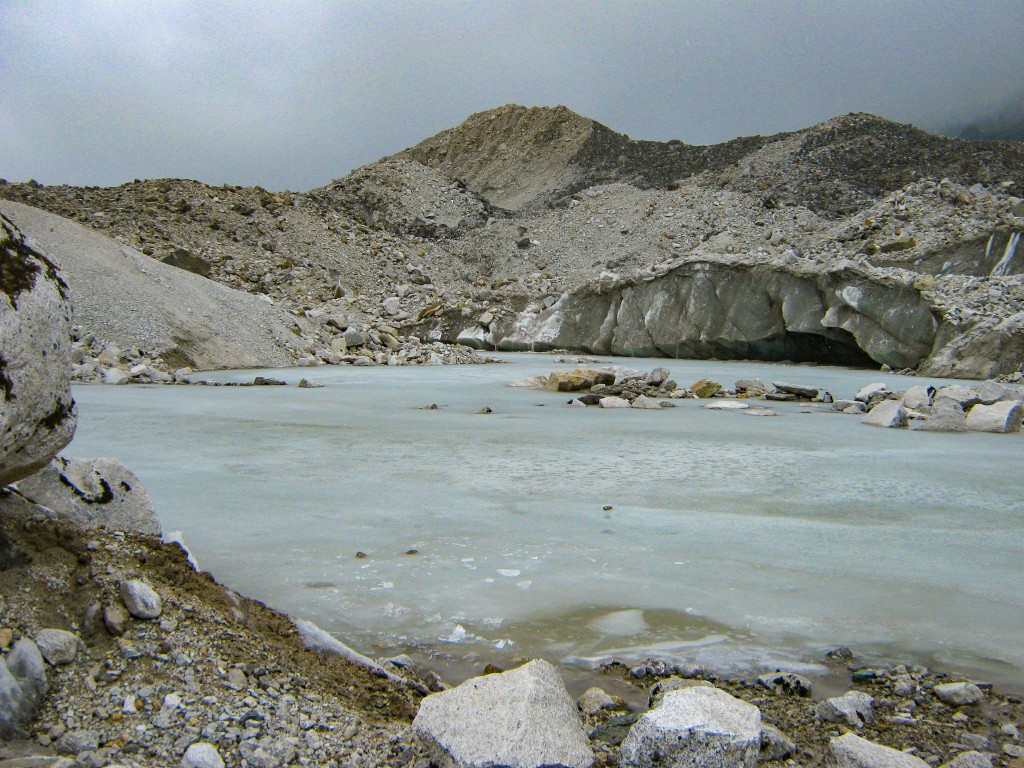
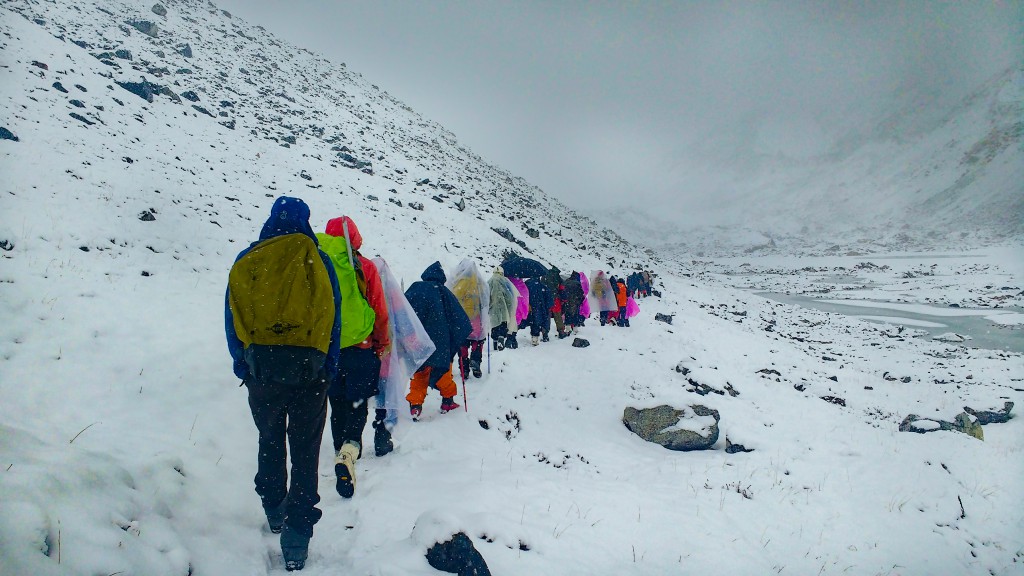
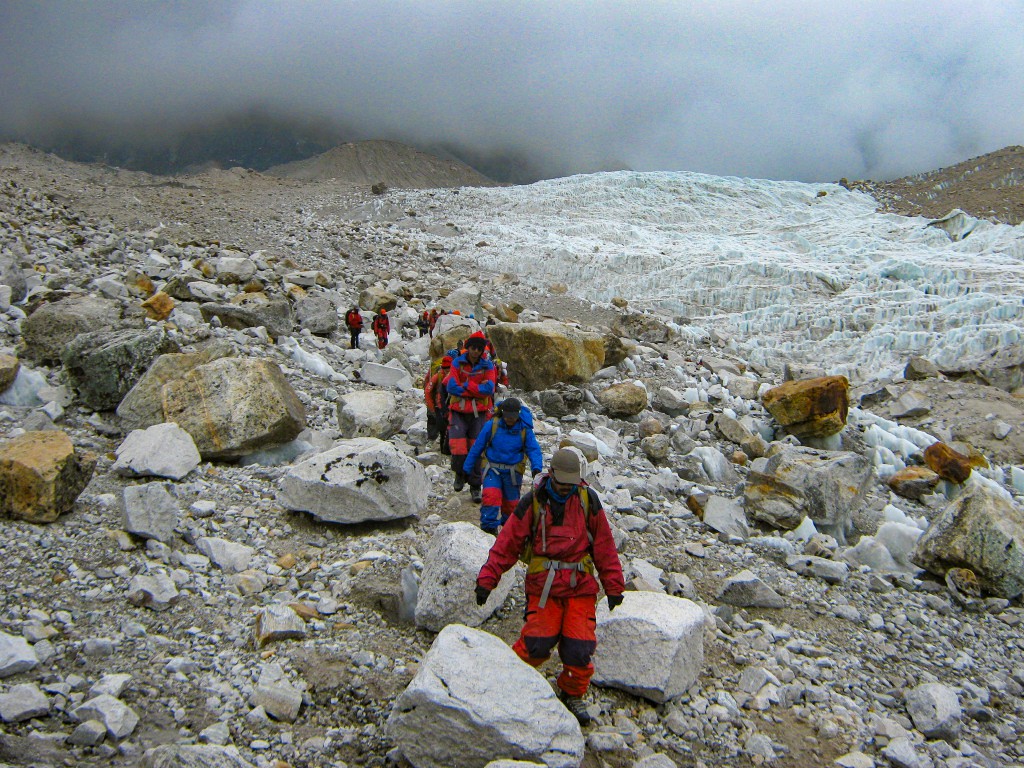
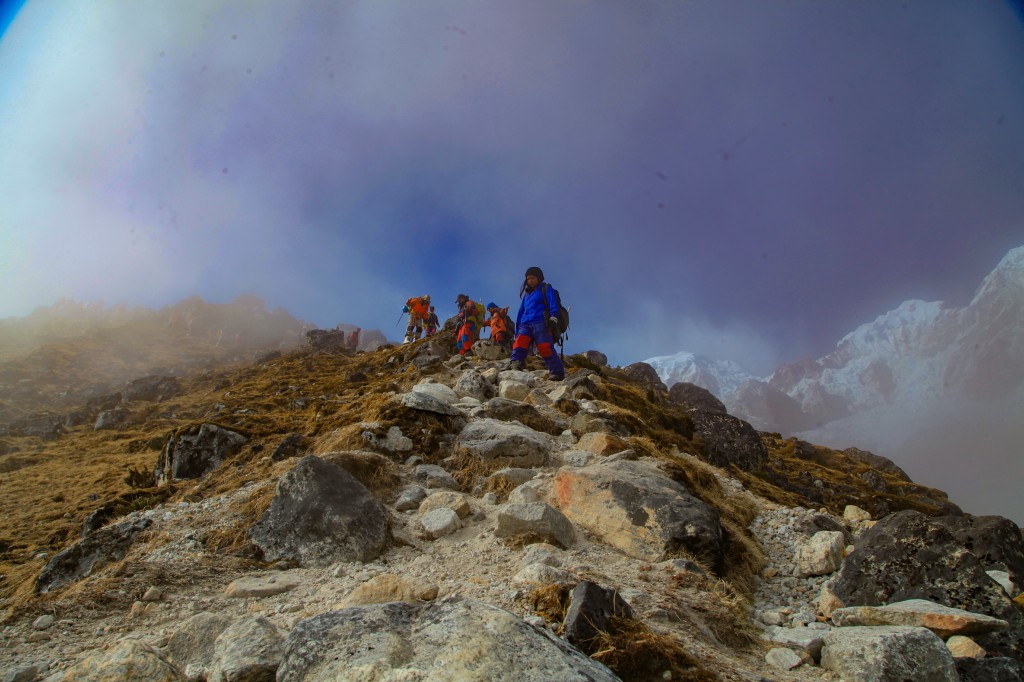
Our Glacier Training at HMI included
- Coordination of ice ax and crampons
- Pick and toe method
- Side traversing
- Ice wall climbing up and down with the help of ice ax and crampons
- Jumaring
- Rappelling on an ice wall
- Crevasse rescue ( Z-pulley system and single pulley system)
- Making anchor base (linear, triangular and rectangular)
Our training duration was around 4 hours in which we used to do continuous training. The most tiring was climbing on the ice wall. We used to get completely drained out after coming down. It was really challenging to do that intense training at 15,600 feet in the cold weather having lesser oxygen.
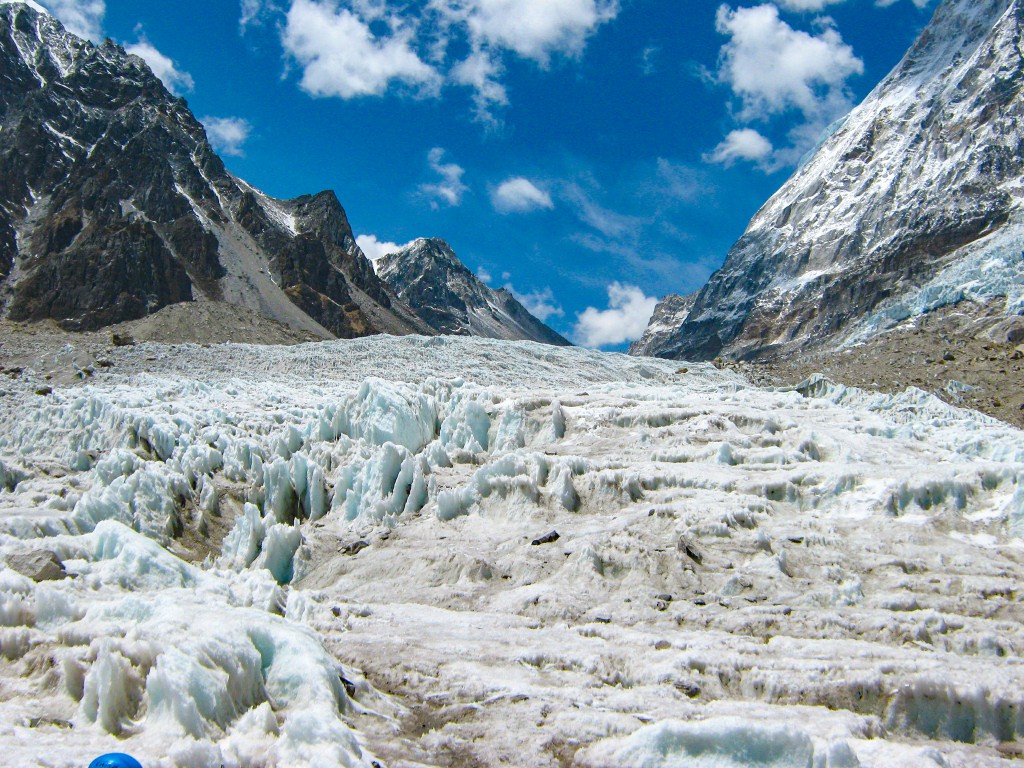
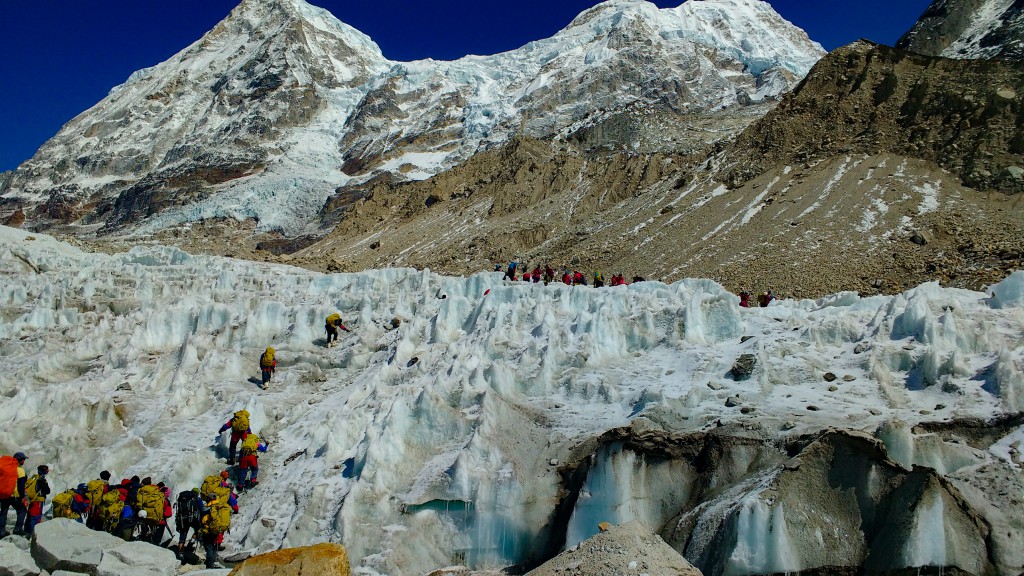
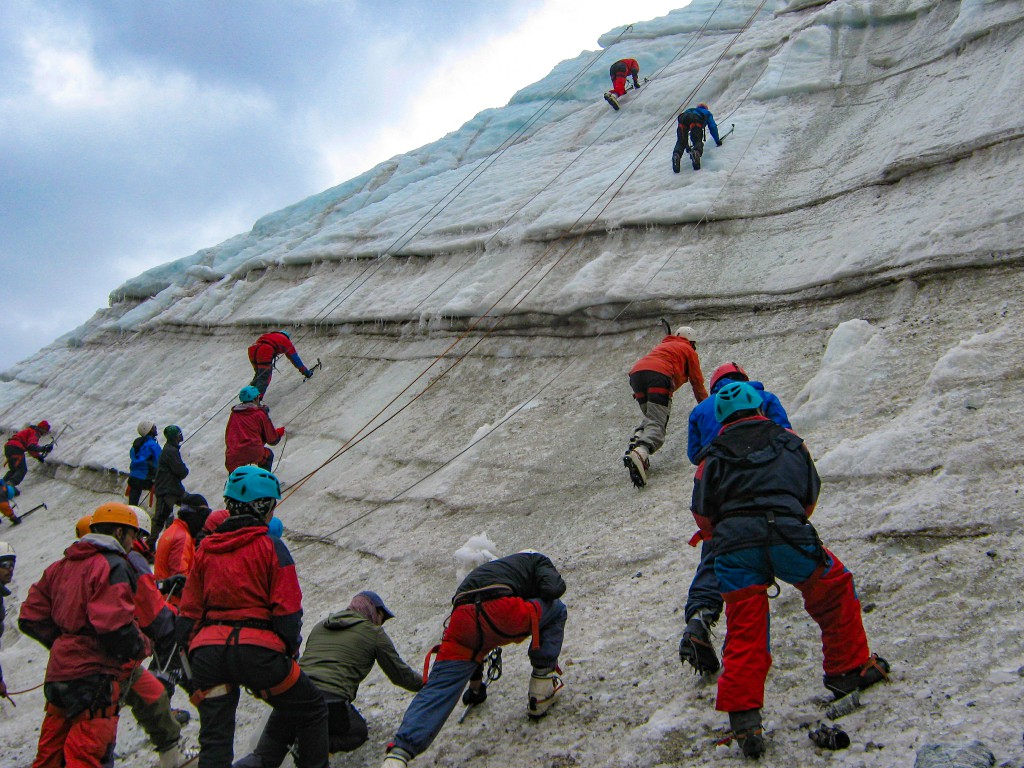

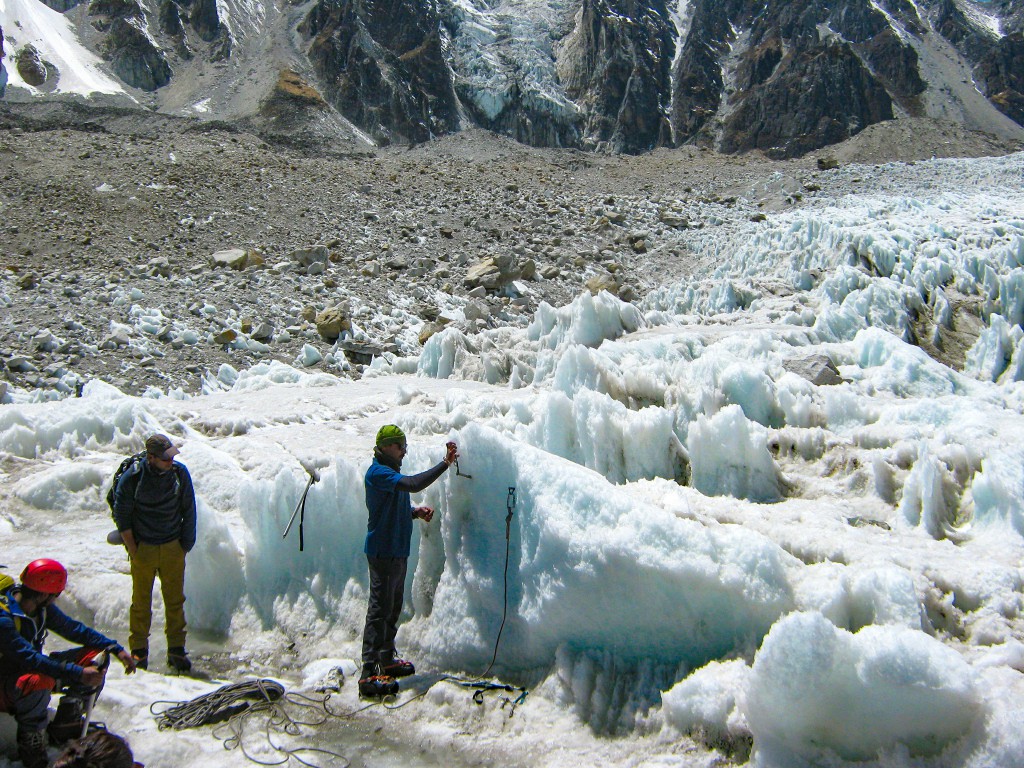
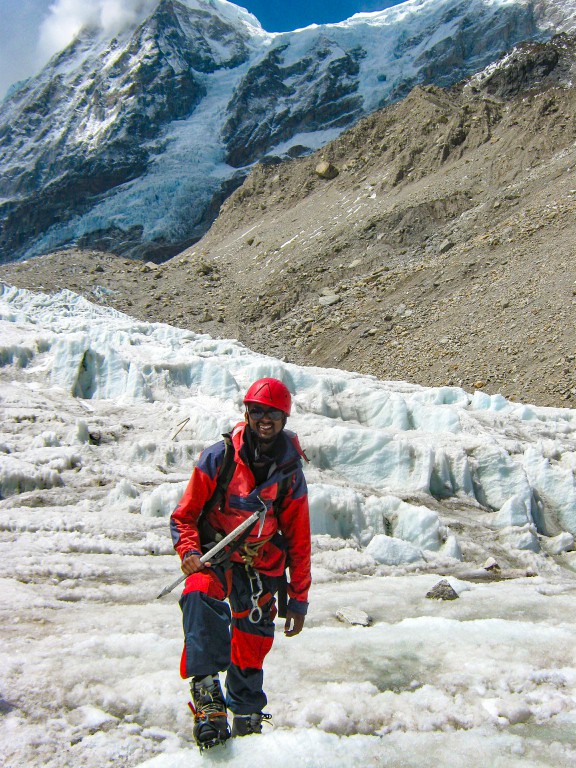
Training at Advance Base Camp
Apart from the glacier training, one day we also went to Advance Base Camp for activities such as long phase rappelling and self-arrest techniques. The advance base camp was situated at an altitude of 15,500 feet. The trek from base camp to advance base camp was 3 hours long. When we reached there, it started snowing there but still, our activities did not pause.
Out of all the activities, the long phase rappelling was a real thrill. We had to rappel down 200 feet from a rocky cliff and that too in the snowfall. Due to dense fog and clouds, we couldn’t even see anything. Some trainees got scared and refused to do it. During my turn, I just set the half descender and started rappelling without seeing down. The main challenge in the rappelling was the overhang that we had to locate and negotiate the same. Fortunately, I did it in the correct way and successfully reached down.
After doing the rappelling, we had tea and Britannia cake and then we started with the self-arrest technique. Initially, we were wondering that how would we do it in the snowfall but when we attempted, it was fun. In layman’s language, self-arrest is a technique used to stop or block your body while falling on a slope or snowy mountain. Later we trekked back to our base camp.

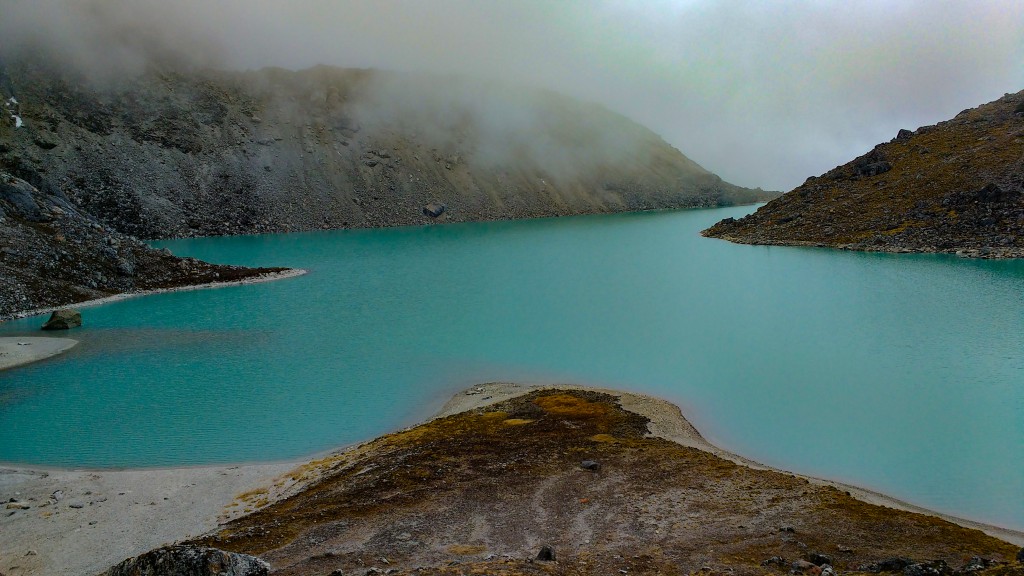
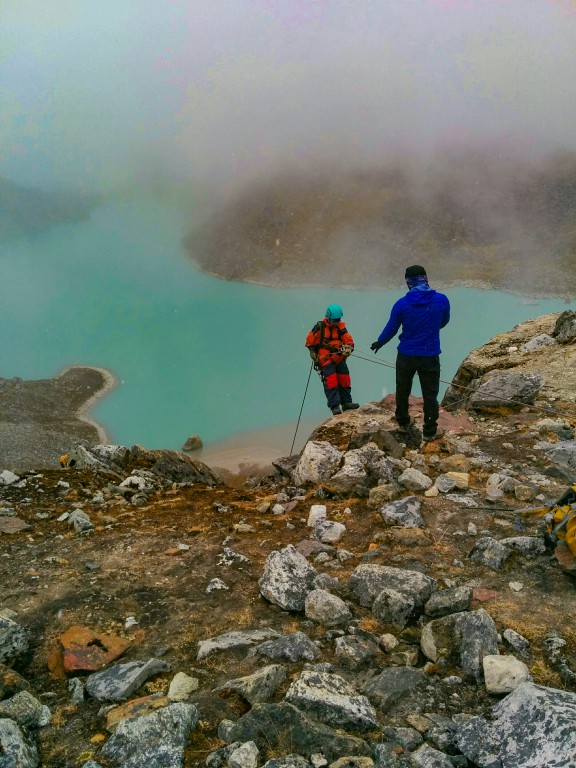
Height Gain Activity
After completing all the training at the base camp, we were left with our last task that was height gain. In this activity, we had to climb a mountain peak. Initially, it was not declared which peak we were going to climb. There are mainly two peaks that basic course trainees climb, which are Renok (16500 feet) and BC Roy (18,200 feet). The chief instructor announced in the morning that we were going to climb the BC Roy peak. The day before the climb, we were given toffees, juice, dry fruits, cake, biscuits so that we could feed ourselves during the climb.

The timings were 4, 5 & 6 and at 6 AM we started our climb. We took the route going towards the Kabru Dome peak and started moving along the stream. We crossed that river stream and continued our walk over a ridge. The ridge was steep so we were trying to maintain the rhythm between our walking and breathing. After crossing the ridge, we came across a wall on which there were fixed ropes. From this point, our technical climb was about to start. I was feeling tired, so I decided to take rest for a couple of seconds and then put on the harness seat. Our chief instructor Lakpa Sir was continuously shouting on us and saying “hurry! Walk fast otherwise I will leave you and you will not be able to climb the peak”.
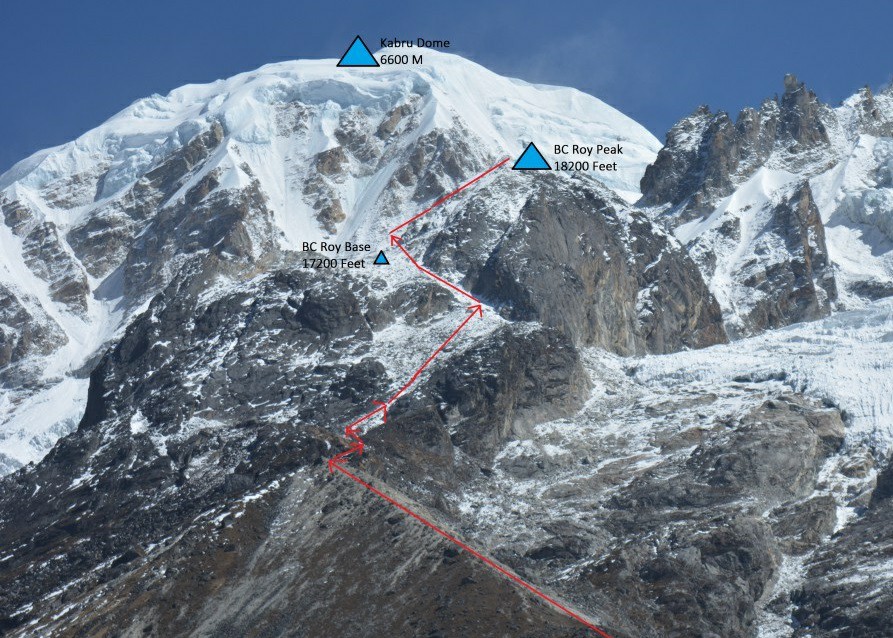
After listening to the instructor, I did not take the rest and set the self-anchor with the carabiner and began the technical climb. There were four breakpoints where we had to change the ropes. After around 40 minutes of climb, ropes ended and steep climb started on a route full of snow and boulders. I was climbing slowly as I was having a severe cough due to which everyone was ahead of me, except 11 trainees. We 12 were walking slowly.
When we reached the base of BC Roy Peak, we got news from Norbu that the chief instructor asked us to stop there. Due to our slow speed, our instructors took this decision. We did not argue because we knew that we were not in that condition to summit the peak. We were feeling bad but we made up our mind and decided to have a photo with the flag. This was the first time I reached 17,200 feet.
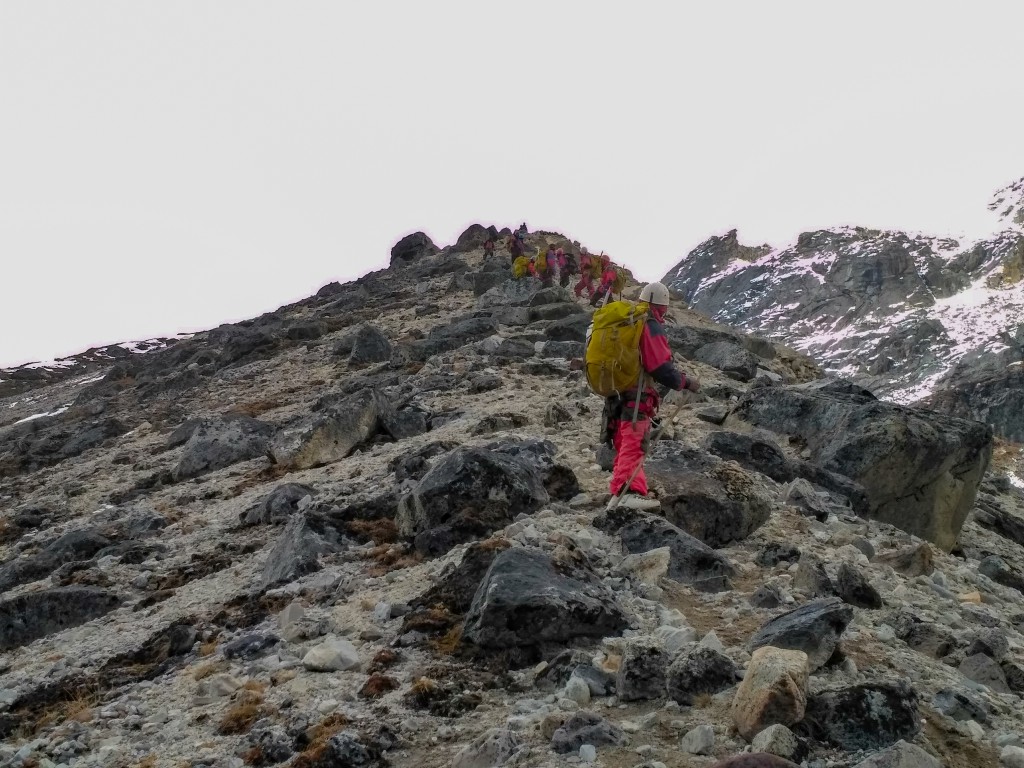

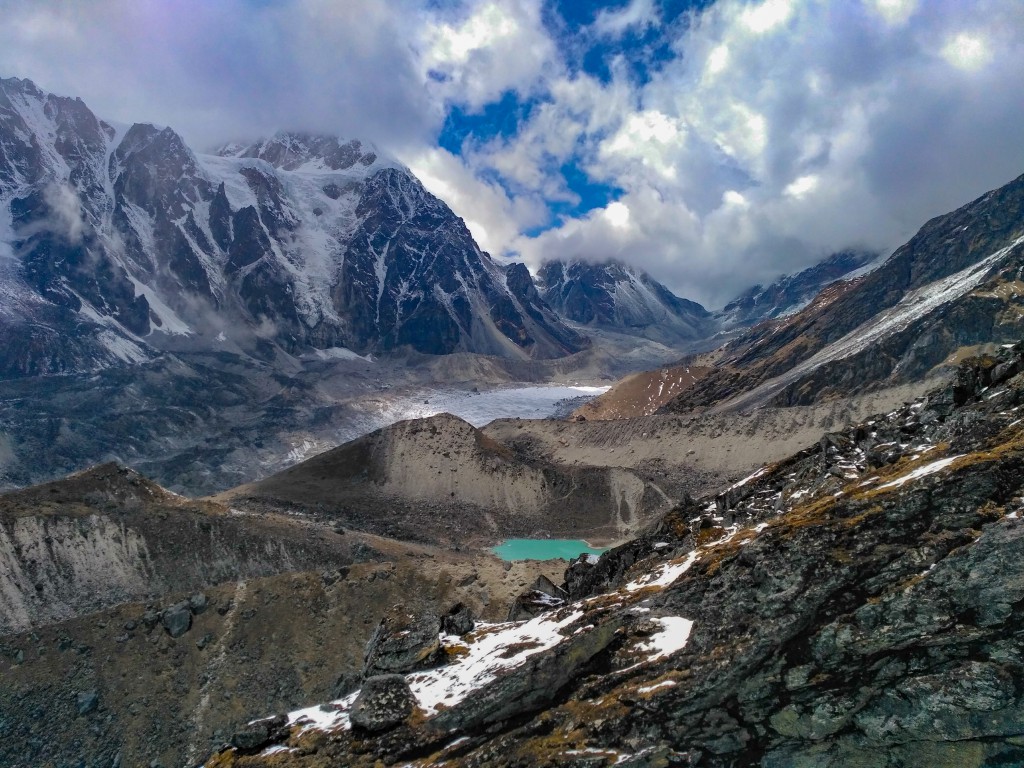

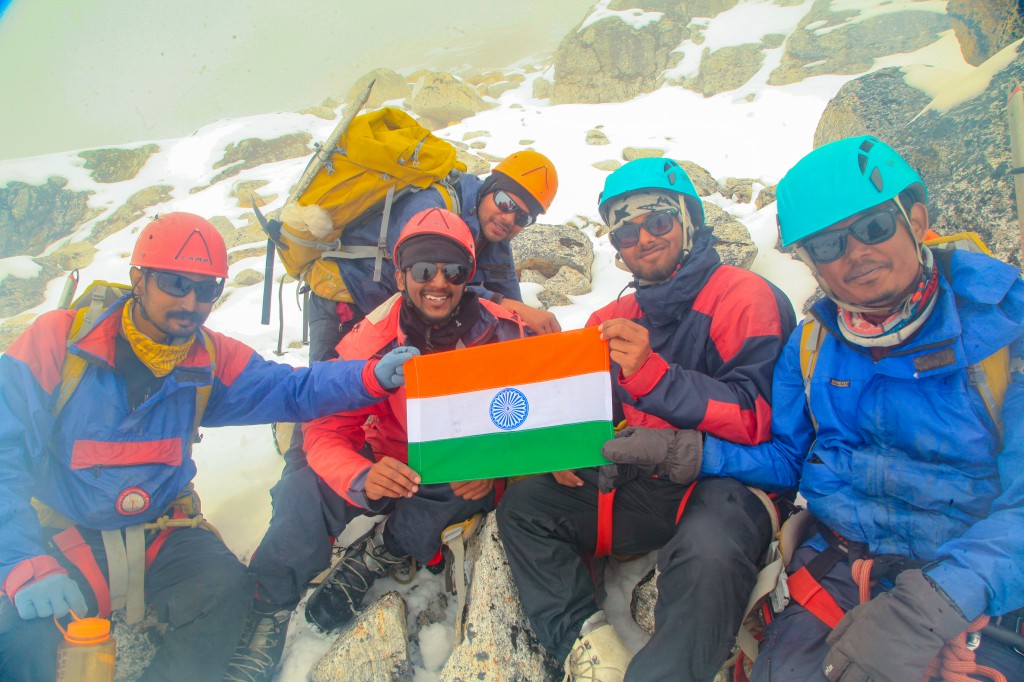
After all this, we started descending towards the basecamp. While climbing down from the base of BC Roy peak, there was no instructor with us. We crossed the trekking part by normal downhill walk. Though it wasn’t that easy as the terrain was slippery due to melting snow. When the fixed rope came, initially we wondered which technique should we use to climb down? After thinking for a couple of minutes, we decided to rappel down and we set the half descender and started rappelling. The technique that we applied was not suggested on that terrain but we did it and came down safely. We reached the base camp by evening and we were completely discharged by that time. Later in the evening, we congratulated all the trainees who successfully summited the peak.
Other activities we did at the base camp
- Sequence climbing
- Double jumaring
- Suspension traverse
- Tyroline traverse
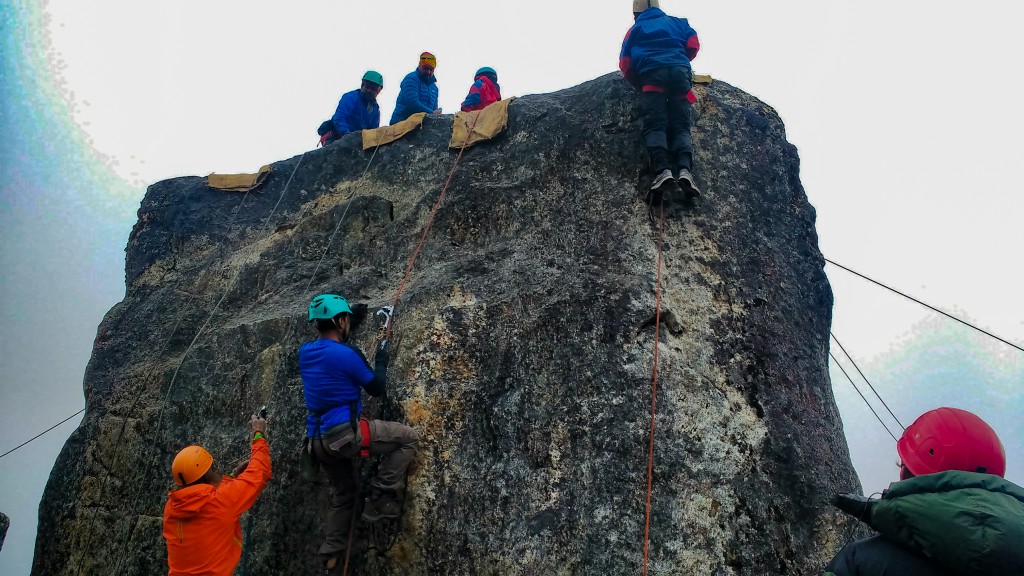
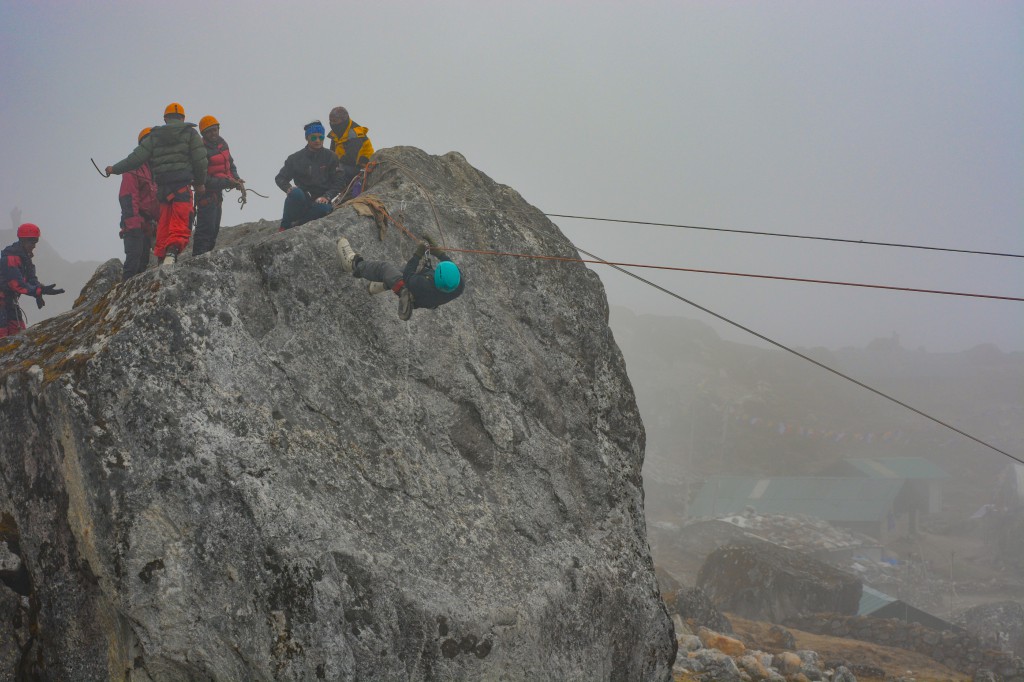
Trek back to Yuksom – Glacier Training at HMI
Now our glacier training at HMI base camp was completed and we were given a rest day before leaving the base camp. The next day morning, we started our trek to Tshoka. We skipped the campsite Dzongri and directly trekked down to Tshoka. After staying for a night, we departed for Yuksom on the next day by early morning. We reached Yuksom by noon and after having lunch, we boarded the car and started our journey back to Darjeeling. We reached Darjeeling by late evening.
The next and the last blog explains the Last days at HMI and graduation ceremony.
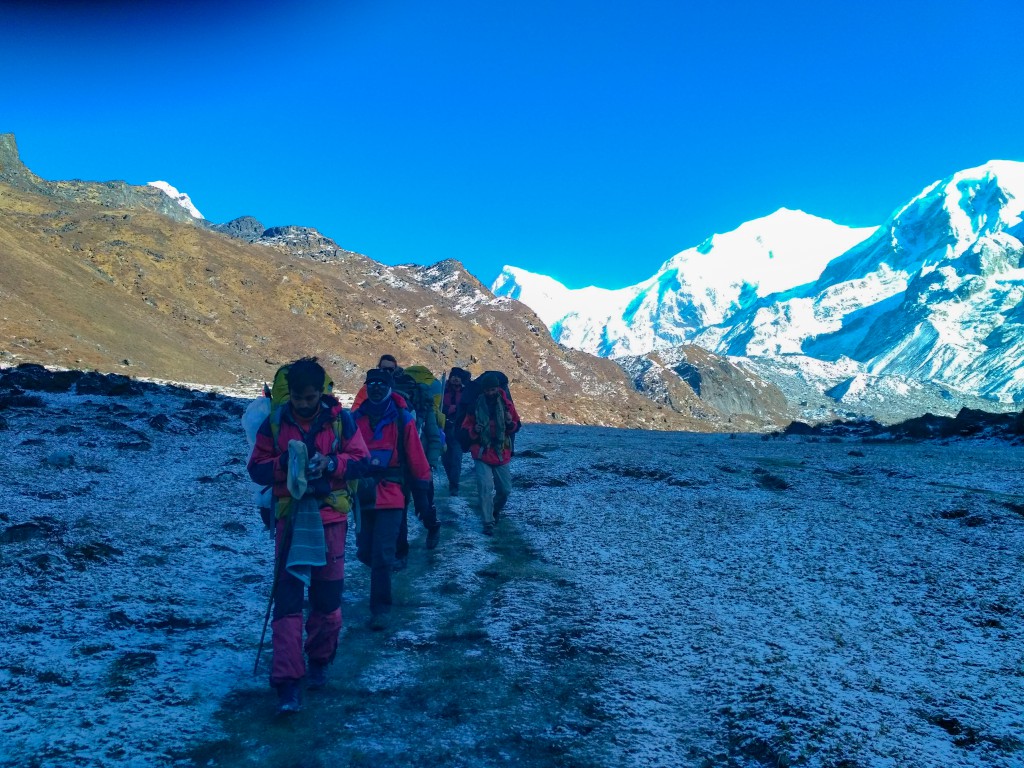
Here are all the blogs regarding my HMI journey.
- Part 1 – How I came to know about this course?
- Part 2 – Exploring Darjeeling
- Part 3 – Life & Training at HMI Darjeeling
- Part 4 – Rock Craft Training at HMI Darjeeling
- Part 5 – Trek to HMI Base Camp in West Sikkim
- Part 6 – Reaching Chaurikhang Base Camp
- Part 7 – Life & Training at HMI Base Camp
- Part 8 – Peak Climbing, Snow Craft & Glacier Training at HMI Base Camp
- Part 9 – Last Days and Graduation Ceremony
Hope you enjoyed reading the blog. In case of any suggestions, improvements, or any queries, please let me know in the comments. 🙂




Wow!! Just what i wanted to read before my course! I am going to NIM this October.. super excited ����
Great! Thanks for all the info. What was the cost of the basic course and what is the selection criteria?
Thanks and all the best 🙂
Cost was INR 7750 including everything and there is no such selection criteria only a medical test happens that you have to pass.
A good blog always comes-up with new and exciting information and while reading I have feel that this blog is really have all those quality that qualify a blog to be a good one.
I like reading posts about traveling to mountains and different experiences. This is very good that there are so many photos at your blog and we can feel the real atmosphere of mountains and winter weather. I've seen a lot of different reviews on Ninjaessays.com about this region but this one is one of the best ones. Thank you for writing in this manner.
[…] trainingPart 6 – Trekking to HMI Basecamp at ChaurikhangPart 7 – Life at HMI Base CampPart 8 – Rock Craft and Ice Craft Training at HMI Base Camp Part 9 – Graduation Ceremony at HMI […]